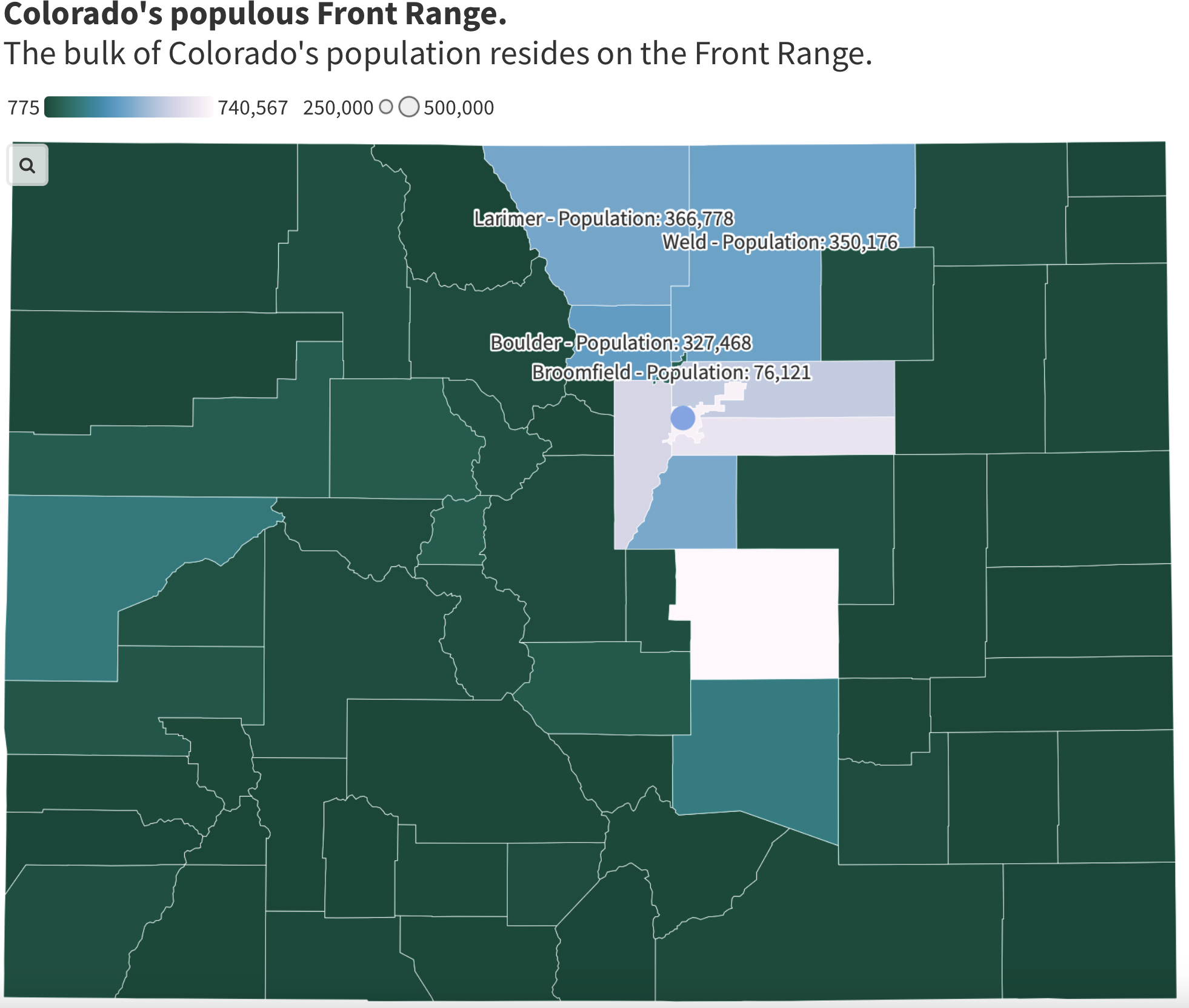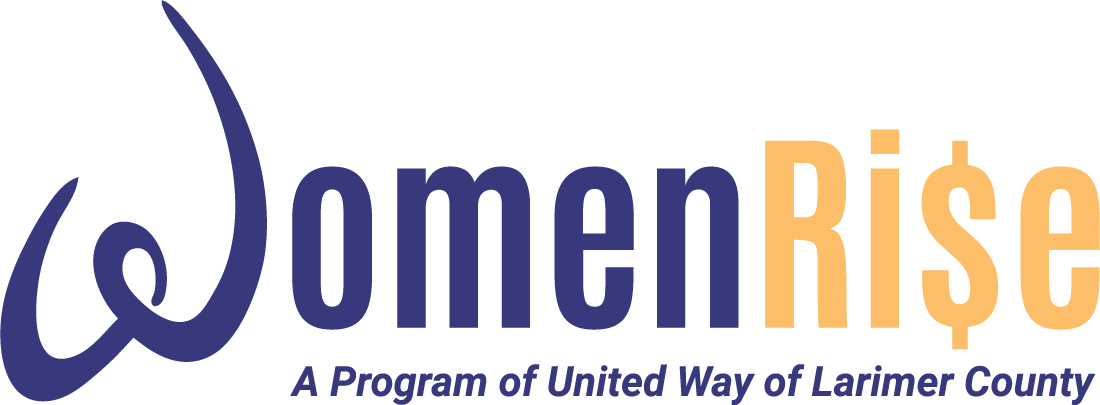Weld, Larimer growth carries state
Northern Colorado counties account for half of state’s population increase

GREELEY — Weld County added more residents than any other county in Colorado from July 1, 2021, to July 1, 2022, accounting for 36% of the population growth in the state overall.
Add in population growth for Larimer County, and the Northern Colorado neighbors accounted for 51.3% of the population added in the state during the one-year period.
Weld County added 10,365 residents during the 12-month period, compared with 6,163 residents added in Douglas County and 4,065 in Larimer. Colorado overall grew by 28,629 residents.
SPONSORED CONTENT
The data reflect the latest annual population estimates from the U.S. Census Bureau.
Elizabeth Garner, the Colorado state demographer, noted that population growth in the state overall has slowed. The state recorded an average annual increase of 74,000 residents from 2010 to 2020.
“Even pre-COVID, Colorado was slowing down,” Garner said, attributing part of the slowing to rising housing prices that have made the state less competitive, as well as an aging of the population.
But Garner’s office has predicted continued higher growth in counties such as Larimer and Weld — predictions that are borne out by the latest data.
“Now, the Northern Front Range area is actually an area that we had been forecasting to grow fast, and it’s continuing to grow like we had thought,” she said.
Larimer and Weld are even outperforming expectations, with Weld County’s 2022 population of 350,176 already five thousand residents ahead of the forecasted 345,159. Larimer’s 366,778 population exceeds the forecasted 363,995.
Weld County’s growth from 2021 to 2022 included net in-migration of about 8,000, with strong natural increase — the difference between births and deaths — of about 2,000.
“They (Weld) are one of the youngest counties,” Garner said, “and they’ve got a lot more kids. So that’s also helping them with their population growth, that it’s not just people moving there.”
Weld County is now more populous than Boulder County, surpassing its neighbor in population just after the 2020 census. Boulder County has yet to recover population lost since the census.
While the number of residents added in Weld topped all 64 Colorado counties, the county ranked No. 4 in terms of percentage growth during the one-year period, at 3.1%, behind San Juan, 8.5%; Custer, 5.4%; and Dolores, 3.6%. Weld ranked No. 1 in percentage growth among counties with at least 100,000 population.
Weld County also topped the state in terms of residents added since the April 1, 2020, census, adding 21,200 residents, No. 5 statewide in terms of percentage growth.
Douglas County added 17,990 since the 2020 census, with Larimer adding 7,712 residents.
The 2020 census calculated Weld’s population at 328,976, with a 2022 estimate at 350,176. A revised estimate shows the county with 339,811 residents in 2021.
Driving Weld’s boom
Rich Werner, president and CEO of Upstate Colorado Economic Development, said growth in Northern Colorado has not been a surprise.
“What this shows is that the projected numbers are coming to fruition,” Werner said. “So you look at what the demographers office has projected over the next few years. And those numbers are filling in where we thought they would be.”
And more growth — much more — is coming. The state demographer predicts that Weld County will reach 610,566 in population by 2050, with Larimer County reaching 495,722.
Werner noted that Larimer and Weld counties offer a variety of housing stocks, with residents able to choose among many different communities that provide the ability to commute not only within the region but also to the Denver metropolitan area.
“You have Northern Colorado as a whole a very attractive alternative … with a variety of housing stocks, a variety of employment opportunities, which makes it just a little bit easier for a variety of demographics to locate in the region,” he said.
Weld County, traditionally dominated by the agricultural, food-processing and energy sectors, is seeing significant growth in life sciences, aerospace and manufacturing, Werner noted.
Agilent Technologies Inc. (NYSE: A) broke ground in February on a $725 million, 198,000-square-foot expansion of its Frederick facility, doubling its manufacturing capacity for therapeutic nucleic acids.
Ursa Major Technologies Inc., which manufactures rocket engines, has been expanding in the Weld County portion of Berthoud.
And, Werner said, inquiries from the aerospace sector — long a staple of counties such as Boulder, Broomfield, Jefferson and El Paso counties — have been increasing.
“We saw more (inquiries) last year in the aerospace industry than we have in recent years,” Werner said.
Weld County ranks eighth statewide in terms of overall population, behind El Paso, 740,567; Denver, 713,252; Arapahoe, 655,808; Jefferson, 576,143; Adams, 527,575; Larimer, 366,778; and Douglas, 375,988. Boulder ranks ninth, with 327,468, with Pueblo County at No. 10, with 169,544 residents.
Larimer growth slower, but strong
The state demographer forecasts that Weld County will surpass Larimer County in population by 2027, but Garner and Werner said it’s more likely to happen in the next couple of years, given the faster-than-predicted growth in Weld County.
But Larimer is growing, too, with new residents helping to ease a chronic labor shortage.
“We are, and have been, pre-pandemic, operating in a labor shortage in Northern Colorado,” said Adam Crowe, economic development director for Larimer County Economic and Workforce Development. “And so, 4,000 people moving here, it is great. It is wonderful, and it definitely takes a bite out of that shortage.”
Crowe said the second half of 2022 “is when we really started to hear from businesses in our networks and throughout the county and a lot of our partners that were working with businesses, that some of the labor challenges we’re starting to ease.”
But, he cautioned, the labor shortage is not over. A significant number of new residents are retirees who may not need to work, he noted, and shortages still exist in the lower-paying retail, hospitality and service sectors.
And 90% of Larimer’s population growth in 2022 came from net migration versus natural increase.
“I don’t think we’re done with that shortage because a lot of it has to do with our natural increase through births,” Crowe said. “But the bottom line is, we just don’t have enough young folks that are moving out into those entry-level positions. And it’s part of what comes to mind again with folks that are moving in. Most of them probably aren’t moving here because they want to get into food service, and most of them aren’t moving here because they want to take entry-level positions in retail.”
Windsor straddles both counties
At the epicenter of growth in Larimer and Weld counties lies the town of Windsor, with about two-thirds of the town in Weld County and a third in Larimer.
Stacy Brown, director of economic development for the town, noted that the state demographer has been predicting robust growth in Northern Colorado for years.
“We believe it’s here and it’s coming,” Brown said. “It’s just been mind-blowing growth.”
Windsor now boasts a population of 43,000 or 44,000, Brown said, compared with 18,644 in the 2010 census.
“I don’t see it slowing down,” Brown said, noting that the town has a “capacity to grow to 100,000.”
Windsor has a strong manufacturing base, Brown noted, with some expansions coming from unexpected industries.
“Apparently, we’re the pet specialists now,” Brown said, noting expansions by Fort Collins-based pet-food company PetDine LLC, cat-litter producer Intersand America Corp. and pet-food producer Identity Pet Nutrition LLC.
Brown has worked to diversify Windsor’s manufacturing base, rather than focus on specific industry clusters.
Windsor has seen substantial growth around the former Eastman Kodak Co. campus in the Great Western Industrial Park, a 3,000-acre master-planned, rail-served development.
Additionally, the Future Legends Sports Complex includes sports venues, with plans for hospitality, retail, residential uses and more.
Windsor also boasts thousands of homes in the pipeline, Brown noted.
“I can imagine that Windsor will be a desirable location to live for many years to come,” she said.
Broomfield ups expectations
While Northern Colorado dominates the state in terms of population added, Broomfield also has seen solid growth, adding 746 residents from 2021 to 2022. Broomfield now stands at 76,121 residents, according to the Census Bureau.
And state demographer predictions that the city and county will reach 93,027 residents in 2050 likely will be revised upward, perhaps by a couple of thousand, Garner said, noting additional multifamily units in the development pipeline.
But Jeff Romine, director of development finance and economist with Broomfield, said even that forecast is likely far too low, noting thousands of housing units in the development pipeline.
“Our entitled units will make us go to 128,000 people,” Romine said.
“So, you gotta imagine that that 93,000 (number) is, I don’t know … it’s a decade old or whatever, but it’s not even close,” Romine said. “I mean, we’ll pass that probably within a decade.”
Developments include projects at FlatIron Crossing, Flatiron Marketplace, Baseline and other neighborhoods. Additional land is available in Broomfield east of Interstate 25, he noted, potentially taking the city and county’s population even higher.
Boulder a different story
While Broomfield, Larimer and Weld counties recorded solid growth in population, Boulder has yet to recover population lost during the COVID-19 pandemic. The county stood at 330,764 residents as of the April 2020 census, but that number dropped to 327,085 by July 2021, before reaching 327,468 a year later.
Boulder joins Denver and Jefferson counties in trailing their 2020 census numbers.
One factor in Boulder’s population struggles likely is the high cost of housing. The city of Boulder’s median home sales price stood at about $1.4 million in March, according to data provided by Information and Real Estate Services LLC, the Loveland-based multiple listing service for the region.
That compares with $623,521 in Fort Collins, $408,400 in Greeley, $603,000 in Longmont and $530,544 in Loveland.
“This is not a surprise to us who have followed the trends in housing costs and the lower-than-necessary development of new affordable housing, workforce housing,” said John Tayer, president and CEO of the Boulder Chamber. “And so as job opportunities continue to arise and our population as a state grows, you’ll find that there are folks identifying housing opportunities in other areas outside of our community, and it only highlights the need for our community that cares about sustainability, social equity, and a vital economy that we work to both increase and expand our stock of workforce housing, as well as improve along the entire front range, our transportation infrastructure.”
High housing prices and an aging population pose challenges for Boulder County, Garner noted.
“I think Boulder is gonna have its work cut out for it,” Garner said.
The city of Boulder continues to enjoy substantial advantages driven by the presence of the University of Colorado Boulder, federal labs and large employers, Garner noted.
“The university is a huge component and economic driver right there in the city,” Garner said. “And it’s funny, it’s like you’ve got two population groups. You’ve got the university students. And then you’ve got like these older adults, and you don’t have a lot in the middle.”
As some Boulder residents age, many are making use of the high value of their homes to finance their retirement.
“Many people have a gold mine and are selling that gold mine and then going somewhere that’s a little bit less-expensive,” she said, with Boulder residents moving to Longmont, Broomfield, Jefferson, Larimer or Weld counties.
But Boulder’s challenges mirror that of Colorado as a whole, Garner noted, with higher housing prices and an aging population.
“We maybe didn’t need to compete as hard historically,” she said, “and I think that that piece is what’s going to be changing.”
GREELEY — Weld County added more residents than any other county in Colorado from July 1, 2021, to July 1, 2022, accounting for 36% of the population growth in the state overall.
Add in population growth for Larimer County, and the Northern Colorado neighbors accounted for 51.3% of the population added in the state during the one-year period.
Weld County added 10,365 residents during the 12-month period, compared with 6,163 residents added in Douglas County and 4,065 in Larimer. Colorado overall grew by 28,629 residents.
The data reflect the latest annual population estimates from the U.S. Census Bureau.
Elizabeth Garner, the Colorado state demographer,…





